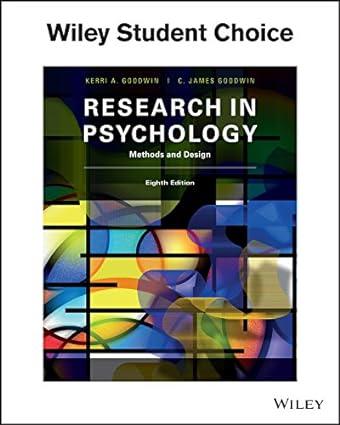Threats to internal validity are common in nonexperimental studies. What follows is a list of some threats
Question:
Threats to internal validity are common in non‐experimental studies. What follows is a list of some threats you’ve encountered in this chapter and in Chapter 5. For each of the hypothetical experiments described, identify which of these threats is most likely to provide a reasonable alternative explanation of the outcome. In some cases, more than one threat could be involved.
Some threats to internal validity:
1. A university dean is upset about the low percentage of freshmen who return to the school as sophomores.
Historically, the rate has been around 75%, but in the academic year just begun, only 60% of last year’s freshmen return. The dean puts a tutoring program into effect and then claims credit for its effectiveness when the following year’s return rate is 65%.
2. Two nearby colleges agree to cooperate in evaluating a new computerized instructional system. College A gets the program and college B doesn’t. Midway through the study, college B announces it has filed for bankruptcy (even though it continues to operate). One year later, computer literacy is higher at college
a.
3. Twelve women who volunteer for a home birthing program are compared with a random sample of other pregnant women who undergo normal hospital procedures for childbirth.
Women in the first group spend an average of 6 hours in labor, while those in the control group spend an average of 9 hours.
4. A 6‐week program in managing test anxiety is developed and given to a sample of first‐semester college students. Their anxiety levels are significantly lower at the conclusion of the program than they were at the start.
5. A teacher decides to use an innovative teaching technique in which all students will proceed at their own pace throughout the term. The course will have 10 units, and each student goes to unit N after completing unit N ‐ 1. Once all 10 units have been completed, the course is over and an A has been earned. Of the initial 30 students enrolled in the class, the final grade distribution looks like this:
The instructor considers the new course format an unqualified success.
6. A company decides to introduce a flextime program. It measures productivity for January, runs the program for six months, and then evaluates productivity during the month of June. Productivity increases.
Step by Step Answer:






